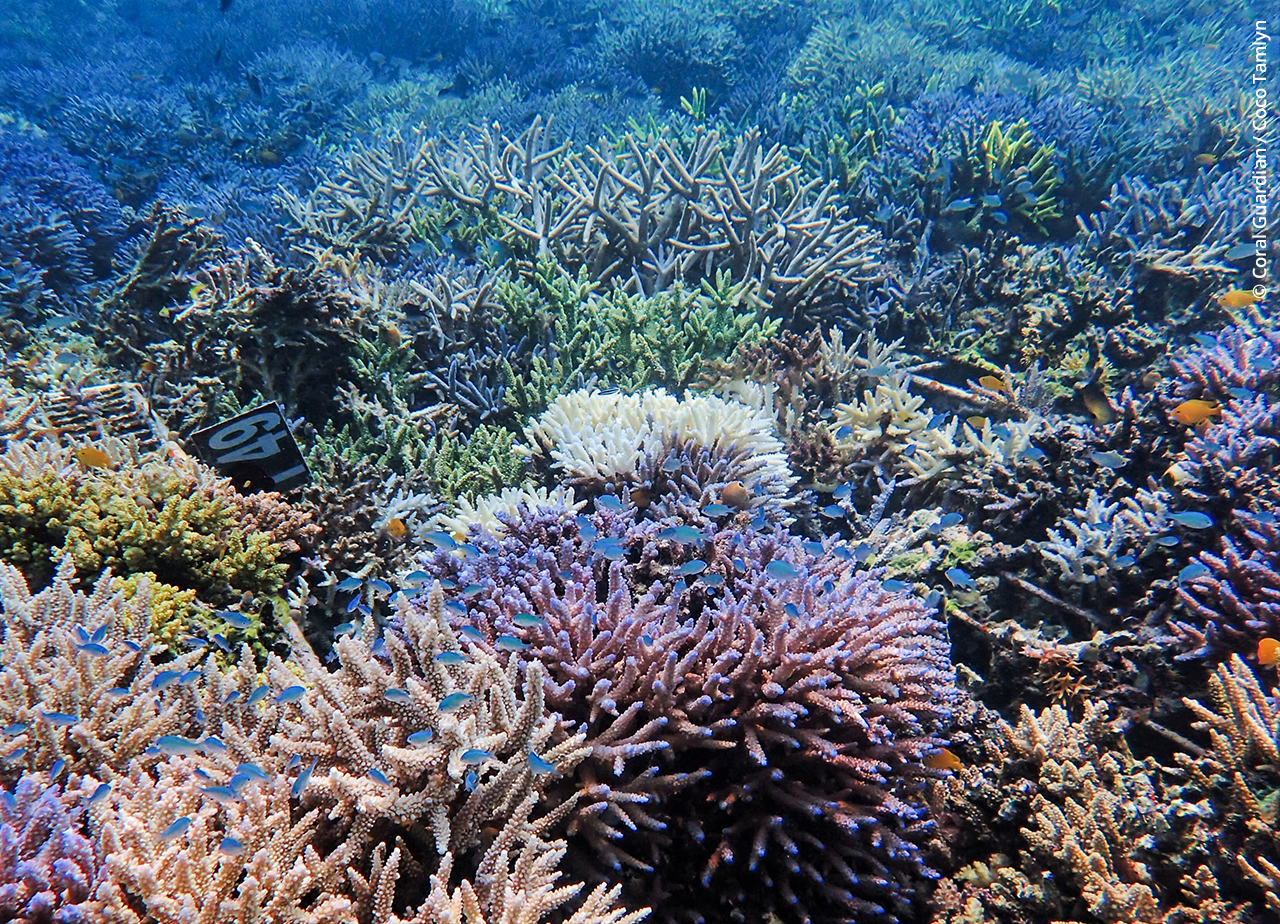Bleaching of coral reefs : death sentence or scope for adaptation?

Symbiosis and coral bleaching description
A symbiosis (a beneficial association between two organisms) often exists between corals and dinoflagellate microalgae (symbionts). This symbiosis is known to be really important for the corals. For instance, it has a feeding role or a protection role for them.
A well described phenomenon called “coral reef bleaching” has been attributed to elevated temperature, high solar irradiance, and sometimes disease (Glynn, 1993). Indeed, corals are able to induce the expulsion of their microalgae which leads to their bleaching.
Two ways of looking at the coral bleaching phenomenon
The loss of symbiotic microalgae may lead to coral mortality due to the many lost benefits (Eakin et al., 2010; Hughes et al., 2018) and could also lead to the degradation of reef ecosystems (Glynn & Colgan, 1992). Therefore, coral bleaching is frequently considered to be a drastic and damaging response to adverse environmental conditions (Brown, 1997; Glynn, 1993).
However, an alternative view around coral bleaching exists : “The adaptive bleaching hypothesis” (Kinzie et al., 2001). In some studies, the bleaching phenomenon is described as an opportunity for reef corals to get rid of their current partners and to acquire new microalgae better suited to new environmental conditions (Baker, 2001; Buddemeieran & Fautin, 1993; Rowan, 2001; Wareet et al.,1996). This could be a strategy that may confer corals an advantage to cope with climate change (Baker, 2001) by hosting genetically better fitted microalgae. This phenomenon is called adaptation (when a favourable genetic change is kept because it confers an advantage to survive).
Some studies linked to the adaptive bleaching hypothesis
The grounds of this hypothesis have been tested in a study (Kinzie et al., 2001). They effectively found out that genetically different strains of microalgae did exhibit different responses to temperature increases, and that bleached adult corals were effectively able to acquire microalgae from the environment (Kinzie et al.,2001). These findings imply that this hypothesis is not so far-fetched.
Another study revealed that new microalgae may be acquired by corals also during infection. Thus, providing corals with novel physiological capabilities and a better chance to cope with this phenomenon (Jokiel & York, 1982).
Additionally, Baker (2001) compared the adaptation of deep and shallow corals in a new environment. Indeed, he took deep corals which he transplanted on a shallow surface (deep-shallow), and surface corals which he placed on a great depth (shallow-deep) (Baker, 2001). Thus, he observed a shift of microalgae populations in corals due to their change of environment (Baker, 2001).
It turns out that the deep-shallow transplants suffered greater bleaching but a lower mortality rate after 12 months (Baker, 2001). He discovered that they presented a greater microalgae diversity, which might help them to adapt better (Baker, 2001). While the shallow-deep corals, experienced little bleaching but greater mortality at the end (Baker, 2001). They possessed less microalgae diversity so they might have been less suited to cope with their new environmental conditions (Baker, 2001).
Finally, deep corals will undergo immediate bleaching, but will eventually adapt thanks to their rich microalgae diversity (Baker, 2001). While surface corals will face less immediate effects but will have difficulties adapting in the long term (Baker, 2001).
To sum up
Finally, bleaching can be viewed as an ecological gamble that sacrifices short-term benefits (food, protection) for long-term advantages (survival) (Baker, 2001).
This defies conventional knowledge that asserts bleaching is detrimental from all perspectives and supports the role of symbionts as adaptive agents (Rowan, 1998). This “Symbiosis recombination” could help us understand a paradox : how can coral reefs be so environmentally fragile, yet form geologically long-lived associations (Baker, 2001).

